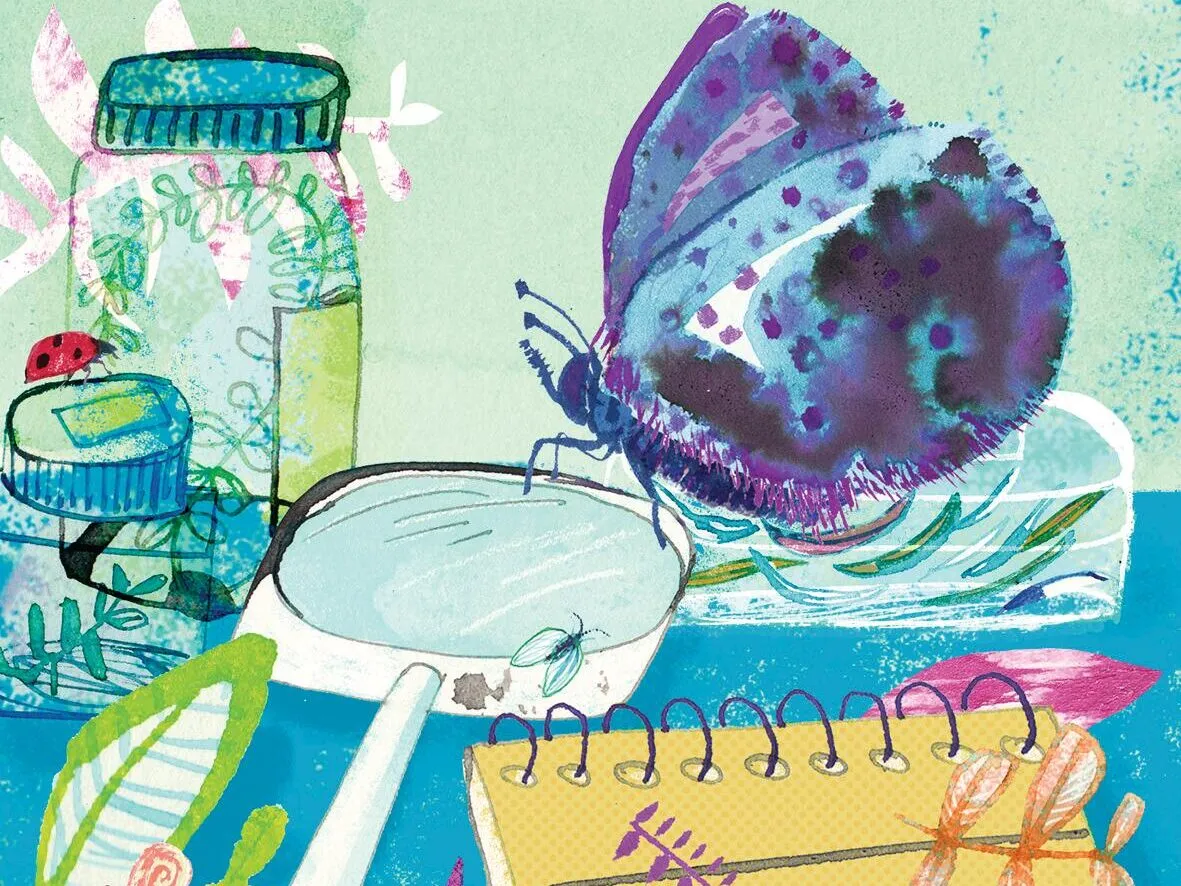As you can’t fail to have noticed, rewilding is everywhere. But what exactly does it mean for gardeners? One problem is the word itself, which is so elastic that it can mean almost anything, depending on whom you talk to. If you could eavesdrop on ecologists arguing about rewilding, you might find them debating the pros and cons of reintroducing carnivores such as wolves and lynx to the UK – in other words, not a conversation of any great interest to the average gardener.
Even the ‘wild’ habitats created by some gardeners, such as wildflower meadows, are very far from being truly wild
A common thread in any discussion of rewilding is an increase in wildness, although ‘wild’ itself is another word that no two people can agree on. It’s perhaps better, because it’s more concrete, to talk about the withdrawal of human influence. In short, more human influence equals less wildness. But in a gardening context, what doesn’t look at all wild to you and me can look surprisingly wild to the wildlife itself.

Into the woods
Any impartial observer would surely agree that the average garden is the product of some fairly intensive human effort. Few things are less wild than a herbaceous border, and it is thought that the result of the complete withdrawal of human influence from a garden would, before very long, be a wood. Indeed, one definition of gardening could be the maintenance of a state of permanent succession, constantly countering the tendency of progression towards a climax woodland.
Less human influence means, often surprisingly quickly, more trees and shrubs
Even the ‘wild’ habitats created by some gardeners, such as wildflower meadows, are very far from being truly wild. Real agricultural meadows are the product of decades or even centuries of human management, and the creation and maintenance of a garden meadow requires just as much effort as any other part of the garden. If this effort is withdrawn, a meadow would rapidly succumb to invasion by trees and shrubs.
The garden habitat
Ecologist Jennifer Owen spent 30 years monitoring the wildlife of her suburban garden in Leicester, starting in 1972, and it remains to this day one of the very few gardens for which we have even a partially complete wildlife inventory.
Woodland has its own rich wildlife, but little of it is the same as that supported by a garden, most of which would be lost.
Two things stand out from Owen’s study. One is the astonishing biodiversity her garden supported – whether we look at butterflies, hoverflies, bees or ladybirds, somewhere between a fifth and half of all the species known to occur in the UK turned up at least once. The other notable finding is that all this happened without any attempt to create any kind of ‘wild’ habitat.
In other words, Owen’s garden was a garden, pure and simple, with all the things you would expect to find in a normal suburban garden, and nothing else. If all that wildlife was happy to inhabit, or at least visit, her garden, that must be because gardening provides suitable habitats for the wildlife to feed and, very often, also to breed.
Trees, trees and more trees
Less human influence means, often surprisingly quickly, more trees and shrubs. And one of the consistent findings of all comparative studies of garden wildlife is the importance of the quantity of vegetation. Gardens with more trees, more large shrubs and more hedges support more wildlife than gardens with fewer large woody plants. This is hardly surprising: plants are the foundation of the garden food web, and a greater volume of vegetation means more food for herbivores and more habitat for wildlife of all kinds. In the light of this, you might reasonably ask if a hands-off approach (resulting in succession to closed woodland), would necessarily be a bad thing; if trees are good, maybe more trees are even better?
The juxtaposition of open, warm and sunny conditions with damp and shady areas is one
of the things that makes garden wildlife so diverse,
The answer is categorically no. From a wildlife perspective anyway – the result of such a process wouldn’t look much like a garden. Of course, woodland has its own rich wildlife, but little of it is the same as that supported by a garden, most of which would be lost. To make only the most obvious point, conversion to woodland would be disastrous for most pollinators. Apart from a brief spell in spring, the average woodland provides little in the way of flowers.
Open season
The default state of the average garden is rather open and disturbed, with relatively little tall vegetation. So more trees and shrubs extend the range of habitats available, which is normally good news for wildlife, but if we keep adding trees we soon run into diminishing returns.
The juxtaposition of open, warm and sunny conditions with damp and shady areas is one
of the things that makes garden wildlife so diverse, so too many trees risks losing what
makes gardens special in the first place.
In the final analysis, gardens are rich in wildlife not despite gardening, but because of it. Of course, as in any habitat, the character of the wildlife present is dictated by the nature of the habitat, and garden wildlife doesn’t have much in common with that of, say, chalk grassland or ancient woodland. But the answer to that conundrum is not to try to create facsimiles of such ‘wild’ habitats in gardens, but rather
to protect the remaining examples of the real thing in the wider countryside. And meanwhile, carry on gardening.
Read more from Ken Thompson
Why do plant names keep changing?
Opinion: weeds in a Chelsea garden is one thing, but the reality is very different